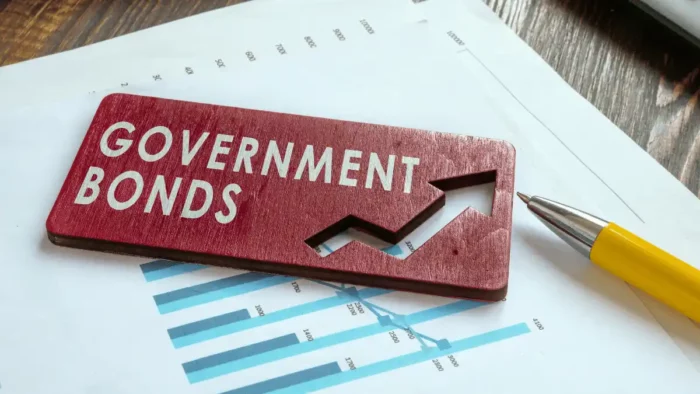Gold, the timeless and precious metal, has been a unique attraction throughout history. Outside its aesthetic appeal, gold has proven to be a resilient and lucrative investment. In times of economic uncertainty, political instability, or inflation, gold has stood the test of time as a safe-haven asset.
This article explores the compelling reasons why investing in gold can be an intelligent financial move, its historical significance, its role in a diversified portfolio, and the various avenues available for seasoned investors and those looking to venture into the world of precious metals.
Safe-Haven Asset
Investors turn to gold primarily because it is a safe-haven asset. In times of economic turbulence, such as recessions, financial crises, or geopolitical tensions, investors often seek refuge in gold to preserve wealth and lower potential risks. Gold has an intrinsic value that exceeds market conditions. It has a track record of holding its value and even appreciating during periods of uncertainty, making it an attractive option for those looking to protect their portfolios against unexpected economic challenges.
For those who want to buy gold bars, some reputable dealers and mints offer various sizes to accommodate different investment preferences. Owning physical gold in bars adds a tangible dimension to one’s investment portfolio, providing a sense of security and ownership.
Gold has become accessible for investments thanks to various investment possibilities adjusted to different preferences and risk tolerances. While physical gold remains a classic choice, modern investors can explore alternatives. Each investment avenue has advantages and considerations, allowing individuals to adjust their gold investment strategy based on their financial goals and risk appetite.
- Physical Gold: Acquiring physical gold in coins or bars allows investors to possess a tangible asset with great value. This approach is favored by those who appreciate the tactile nature of gold and seek a long-term, secure store of value.
- Gold ETFs: Gold exchange-traded funds (ETFs) expose investors to gold without physically owning the metal. These funds monitor the price of gold and offer liquidity, making them suitable for those looking for a more flexible and easily tradable investment.
- Gold Mining Stocks: While this option introduces additional risk due to factors like operational challenges and management decisions, it also offers the opportunity for capital appreciation and dividends.
Diversification and Risk Mitigation
Diversification is the pillar of a sound investment strategy, and gold provides a unique avenue for achieving it. Adding gold to your portfolio can help lower possible risk and improve overall stability. The precious metal often correlates poorly with traditional financial assets like stocks and bonds. When these conventional investments experience volatility, gold can counterbalance, potentially minimizing losses and safeguarding against market downturns. Investors looking to build resilient portfolios should consider the diversification benefits that gold brings.
Inflation Hedge
Unlike fiat currencies, which can lose value over time due to inflationary pressures, gold has inherent value that tends to resist the erosive effects of rising prices. During periods of inflation, the currency’s purchasing power may decline. Still, gold has historically retained its value and, in many cases, appreciated. This makes gold an attractive option for investors seeking to protect their wealth from the long-term impact of inflation and currency devaluation.

Tangible Asset with Limited Supply
Gold’s appeal is further enhanced by its status as a tangible asset with a limited and finite supply. Gold is a physical commodity that cannot be created at will. The scarcity of gold contributes to its ingrained value. This limited supply also positions gold as a resilient asset, as demand often outstrips available reserves, creating a foundation for potential future price appreciation.
Portfolio Insurance in Times of Crisis
Whether it’s a global financial meltdown, a geopolitical conflict, or a public health emergency, gold has consistently demonstrated its ability to retain value and even appreciate when other assets falter. Gold’s reliability as a portfolio insurance asset becomes particularly evident during times of crisis. Investors seeking a hedge against unexpected and intense market disruptions often use gold as financial insurance. The precious metal’s historical performance in crises underscores its role as a reliable and trustworthy investment option.
Long-Term Preservation of Wealth
Gold’s reputation as a long-term store of value makes it an appealing option for investors focused on wealth preservation. While the value of fiat currencies can be eroded over time due to factors like inflation, economic downturns, or political instability, gold has consistently maintained its purchasing power. The ability of gold to last and thrive over extended periods positions it as a reliable asset for those looking to maintain and grow their wealth over the long term.
Conclusion
Investing in gold offers a range of compelling reasons for individuals seeking to build resilient and diversified portfolios. Whether as a hedge against inflation, a safe-haven asset during times of crisis, or a tangible store of value, gold’s historical significance and lasting appeal make it a worthy addition to any investment strategy. As financial markets evolve, gold remains a timeless and reliable asset that transcends cultural, economic, and geopolitical shifts. For those considering the options to invest in gold, understanding its unique attributes and exploring the diverse investment options available can pave the way for a secure and rewarding financial future.





